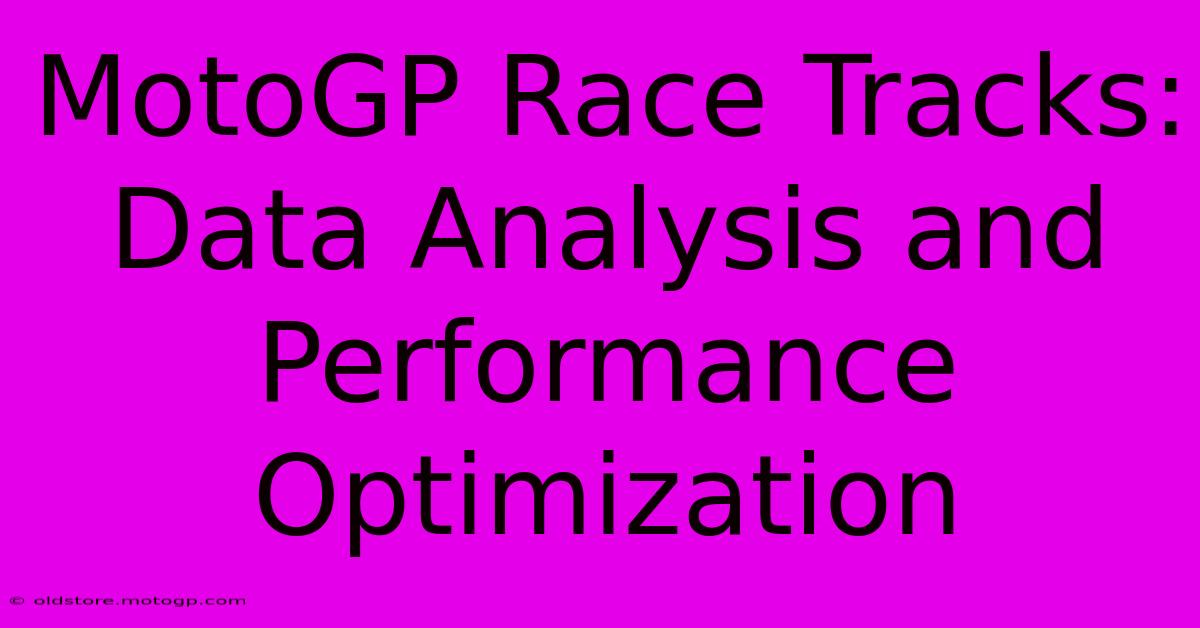MotoGP Race Tracks: Data Analysis And Performance Optimization

Table of Contents
MotoGP Race Tracks: Data Analysis and Performance Optimization
The roar of the engines, the smell of burning rubber, the thrill of neck-and-neck racing – MotoGP is a spectacle of speed, skill, and precision. But beneath the surface excitement lies a complex world of data analysis and meticulous performance optimization. This article delves into how teams leverage data to gain a competitive edge on the diverse range of MotoGP race tracks worldwide.
Understanding the Track's Character: Data Collection and Analysis
Each MotoGP circuit presents a unique set of challenges. From the fast, flowing curves of Assen to the technical, twisty layout of the Sachsenring, track characteristics significantly impact race strategy and bike setup. To effectively optimize performance, teams rely on extensive data collection and sophisticated analysis techniques.
Key Data Points:
- Lap times and sector times: These provide a fundamental understanding of rider performance and identify areas for improvement.
- GPS data: Precise location data reveals the bike's speed, acceleration, braking points, and lean angles throughout the lap. This is crucial for identifying optimal racing lines.
- Telemetry data: Sensors on the bike capture a wealth of information, including engine RPM, throttle position, gear selection, suspension settings, and tire temperatures. Analyzing this data helps engineers fine-tune the bike's setup for each track.
- Rider feedback: Subjective data from the rider, including comments on bike handling, braking performance, and tire grip, is invaluable and often complements the objective telemetry data.
- Weather data: Wind speed, direction, and track temperature significantly influence bike performance and rider strategy.
Optimizing Performance: Strategies and Techniques
The data collected provides a comprehensive picture of performance, allowing teams to identify areas for improvement. Optimization strategies involve a multi-faceted approach:
1. Aerodynamics:
- Computational Fluid Dynamics (CFD): Sophisticated simulations analyze airflow around the bike to optimize aerodynamic performance and reduce drag. Data from wind tunnels further refines these simulations.
- Winglet design: The design and placement of winglets are crucial for generating downforce and stability at high speeds. Data analysis helps optimize their effectiveness for specific tracks.
2. Chassis Setup:
- Suspension tuning: The suspension setup is tailored to each track's characteristics, influencing the bike's handling and stability. Telemetry data helps determine optimal suspension settings for various corner speeds and track conditions.
- Geometry adjustments: Changes to the bike's geometry, such as rake and trail, impact handling and stability. Data analysis helps determine the optimal settings for different tracks.
3. Engine Mapping and Performance:
- Engine mapping optimization: Engine maps control various parameters, including fuel injection, ignition timing, and valve timing. Data analysis reveals optimal engine maps for different track sections and riding styles.
- Gearbox ratios: Gear ratios are optimized to maximize acceleration and top speed on different straights and sections. This requires careful consideration of the track layout and data analysis.
4. Tire Selection and Management:
- Tire compound selection: Teams choose tires based on the track's characteristics, temperature, and expected grip levels. Data analysis informs this decision by assessing historical tire performance on each track.
- Tire pressure management: Optimal tire pressures are crucial for maximizing grip and longevity. Telemetry data helps monitor tire temperatures and pressures to inform pressure adjustments during the race.
The Human Factor: Rider Skill and Adaptation
While data analysis plays a crucial role, rider skill and adaptability remain indispensable. Experienced riders can provide valuable feedback and adapt their riding style to optimize performance on different tracks. The interplay between data-driven insights and rider expertise is key to success in MotoGP.
Conclusion: A Data-Driven Pursuit of Speed
The pursuit of speed in MotoGP is a relentless quest for optimization. By harnessing the power of data analysis and employing sophisticated strategies, teams strive for marginal gains that can make the difference between victory and defeat. The continuous evolution of data acquisition and analysis techniques will undoubtedly shape the future of MotoGP racing, leading to even faster lap times and more exhilarating races.

Thank you for visiting our website wich cover about MotoGP Race Tracks: Data Analysis And Performance Optimization. We hope the information provided has been useful to you. Feel free to contact us if you have any questions or need further assistance. See you next time and dont miss to bookmark.
Featured Posts
-
Moto Gp Replicas Your Gateway To The Track
Feb 25, 2025
-
The Ultimate Guide To Moto2 Bike Specifications
Feb 25, 2025
-
Moto Gp Announcers Their Role In Promoting The Sport
Feb 25, 2025
-
F1 Qualifying Vs Race Pace The Role Of Grid Formula 1
Feb 25, 2025
-
Moto Gp Qualifying Results Shock Upsets And Last Lap Drama
Feb 25, 2025
